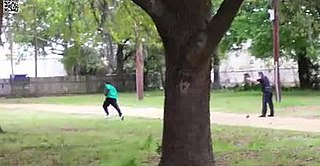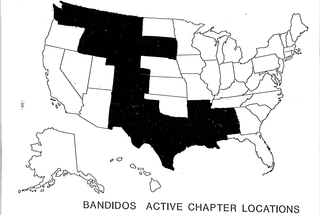
The Service de police de Laval is the municipal police force of the city of Laval, Quebec, north of Montreal. The service consists of approximately 800 officers and civilian employees.
The Boxing Day shooting was a Canadian gang-related shooting which occurred on December 26, 2005, on Toronto's Yonge Street, resulting in the death of 15-year-old student Jane Creba. Six other bystanders—four men and two women—were wounded. The incident took place on one of Toronto's most crowded streets on the very busy shopping day, just a few blocks north of the Toronto Eaton Centre. The story generated national news coverage in Canada and influenced the then-underway 2006 federal election campaign on the issues of gun crime and street violence.
John Henry Browne is an American criminal defense attorney practicing in Seattle, Washington. Browne is known for his zeal in defending his clients, his flair for garnering media attention, and for being known as the “plead guilty to avoid the death penalty” lawyer. He has represented defendants in a number of high-profile cases, including serial killer Ted Bundy, Colton Harris-Moore, Benjamin Ng and Martin Pang. He has tried over 250 criminal cases to verdict. Browne and his actions have been the subject of some controversy, and he has sometimes been criticized for his peculiar and combative style both in and out of the courtroom. He is particularly known for obtaining sympathetic treatment for his clients by shifting the focus away from the serious crimes that were committed by arguing for consideration of the background of the defendant and the circumstances in which the events took place.
Choo Han Teck is a Singaporean judge of the Supreme Court. He was formerly a lawyer before his appointment to the court as a judge. It was revealed in 2021 that Choo was one of the defence lawyers representing Adrian Lim, the infamous Toa Payoh child killer who was executed in 1988 for charges of murdering a girl and boy as ritual sacrifices. In 1994, Choo also defended Phua Soy Boon, a jobless Singaporean who was hanged in 1995 for killing a moneylender.
Anser Farooq is a Canadian defence attorney based in Mississauga, Ontario, who gained notability defending suspects during the 2006 Ontario terrorism plot.
The Red Scorpions is a gang based in British Columbia, Canada. It was formed in 2003 by Quang Vinh Thang Le, Tejinder Malli, Konaam Shirzad, Matthew Johnston, and one other un-named young offender. Michael Le testified at the Surrey Six trial that he and Shirzad formed the Red Scorpions after meeting in a youth detention centre facility. Le said the name Scorpions was a tribute to his "older brother who was killed and his nickname used to be Scorpion". The gang "used the word Red to symbolize blood" he said. Le said Jamie Bacon and his brothers were not founders but joined the gang a few years later.
Victoria Elizabeth Marie"Tori"Stafford was a Canadian girl who was abducted, raped, and murdered by Michael Rafferty and Terri-Lynne McClintic. Her body was found three months later in a wooded area in rural Ontario. The subsequent investigation and search were the subject of massive media coverage across Canada.
Paul Bergrin is an American convicted felon and former criminal defense lawyer who practiced law in Newark, New Jersey. Prior to his conviction, he was known for defending a range of famous and notorious clients. He was convicted of conspiracy to murder a witness and other racketeering, cocaine and prostitution offenses, and sentenced to six concurrent life terms in federal prison in 2013. He was disbarred by the Supreme Court of New Jersey in 2016. A veteran lawyer from the area said that the crimes alleged in the federal indictment would make Bergrin "the craziest, most evil lawyer in the history of New Jersey," and "that is saying something", and a federal court has likened Bergrin's downfall to the plot of a drama by Sophocles or Martin Scorsese.

Christopher Michael Coke, also known as Dudus, is a convicted Jamaican drug lord and the leader of the Shower Posse, a violent drug gang started by his father Lester Coke in Jamaica, which exported "large quantities" of marijuana and cocaine into the United States.

Brian H. Greenspan, is a Canadian criminal defence lawyer. He is the senior partner in the Toronto firm Greenspan, Humphrey, Makepeace LLP and one of the most prominent defence lawyers in Canada.
Kevin Mark Murphy is a Canadian musician and criminal lawyer, best known as a co-founder of the Ottawa-based music group, Singing Fools.

The death of Sammy Yatim occurred early in the morning of July 27, 2013, in Toronto, Ontario, Canada. Yatim, an 18-year-old Toronto male armed with a switchblade knife, was shot at nine times, and was hit by eight of the shots fired by 30-year-old Toronto Police Service (TPS) officer James Forcillo. After being shot, while lying on the floor of the streetcar he was tasered. He later died from the injuries. The incident occurred after Yatim, brandishing a 12 cm (4.7 in) switchblade knife in a Toronto streetcar, advanced on a passenger, threatened other passengers, and exposed himself. The confrontation between Yatim and the police was recorded and footage of it was released publicly, prompting strong reactions across Canada.

Robert Patrick Armstrong is a Canadian lawyer and retired judge. He served on the Court of Appeal for Ontario from 2002 until his retirement in 2013. Before serving on the bench, Armstrong was a partner at Torys and was lead counsel in the Dubin Inquiry on steroid use in Canadian sports. After leaving the bench, Armstrong joined Arbitration Place, a Canadian group specializing in alternative dispute resolution.
Marie Therese Henein, KC is a Canadian criminal defence lawyer. She is a partner of Henein Hutchison Robitaille LLP, a law firm in Toronto.

On April 4, 2015, Walter Scott, a 50-year-old black man, was fatally shot by Michael Slager, a local police officer in North Charleston, South Carolina, United States. Slager had stopped Scott for a non-functioning brake light. Slager was charged with murder after a video surfaced showing him shooting Scott from behind while Scott was fleeing, which contradicted Slager's report of the incident. The racial difference led many to believe that the shooting was racially motivated, generating a widespread controversy.

On November 8, 2010, police in Markham, Ontario, Canada, a suburb outside of Toronto, responded to a report of a robbery and assault at the Unionville home of Hann and Bich Pan, ethnically Chinese Vietnamese immigrants. Both had been shot repeatedly; Bich died of her injuries and Hann was permanently blinded. The investigation revealed that the crime was not a robbery but instead a kill-for-hire orchestrated by the couple's daughter Jennifer Pan. She had expected to inherit her parents' money and was angered that they had forbidden her to see her boyfriend after they discovered she had been deceiving them about her education.
Byron Sonne is a Canadian activist who was wrongly accused of planning to bomb the Toronto G20 Summit in 2010. He was charged with possessing explosives and counseling mischief, later to be acquitted of all charges on May 15, 2012, putting an end to his two-year ordeal. Sonne was a self-proclaimed troubleshooter and was trying to find weaknesses and points of vulnerability in the G20 security systems when he was arrested. The incident created an outrage and started a debate regarding whether citizens have the right to goad their government and just how far one can push the boundaries of civil liberties.

R v Golden, 2001 SCC 83 is a landmark decision of the Supreme Court of Canada on limitations to the power of police officers to perform strip searches. The Court held that the common law rule allowing police officers to perform warrantless searches incident to arrest must be limited in relation to strip searches, citing their heightened intrusiveness and impact on the Charter protected privacy interests of the accused.

The Bandidos Motorcycle Club has been designated an outlaw motorcycle gang by the U.S. Department of Justice. The club is involved in drug trafficking, weapons trafficking, prostitution, money laundering, explosives violations, motorcycle and motorcycle-parts theft, intimidation, insurance fraud, kidnapping, robbery, theft, stolen property, counterfeiting, contraband smuggling, murder, bombings, extortion, arson and assault. The Bandidos partake in transporting and distributing cocaine and marijuana, and the production, transportation and distribution of methamphetamine. Active primarily in the Northwestern, Southeastern, Southwestern and the West Central regions, there are an estimated 800 to 1,000 Bandidos members and 93 chapters in 16 U.S. states.
The Surrey Six massacre was a gang-related massacre that occurred in Surrey, British Columbia on 19 October 2007.









